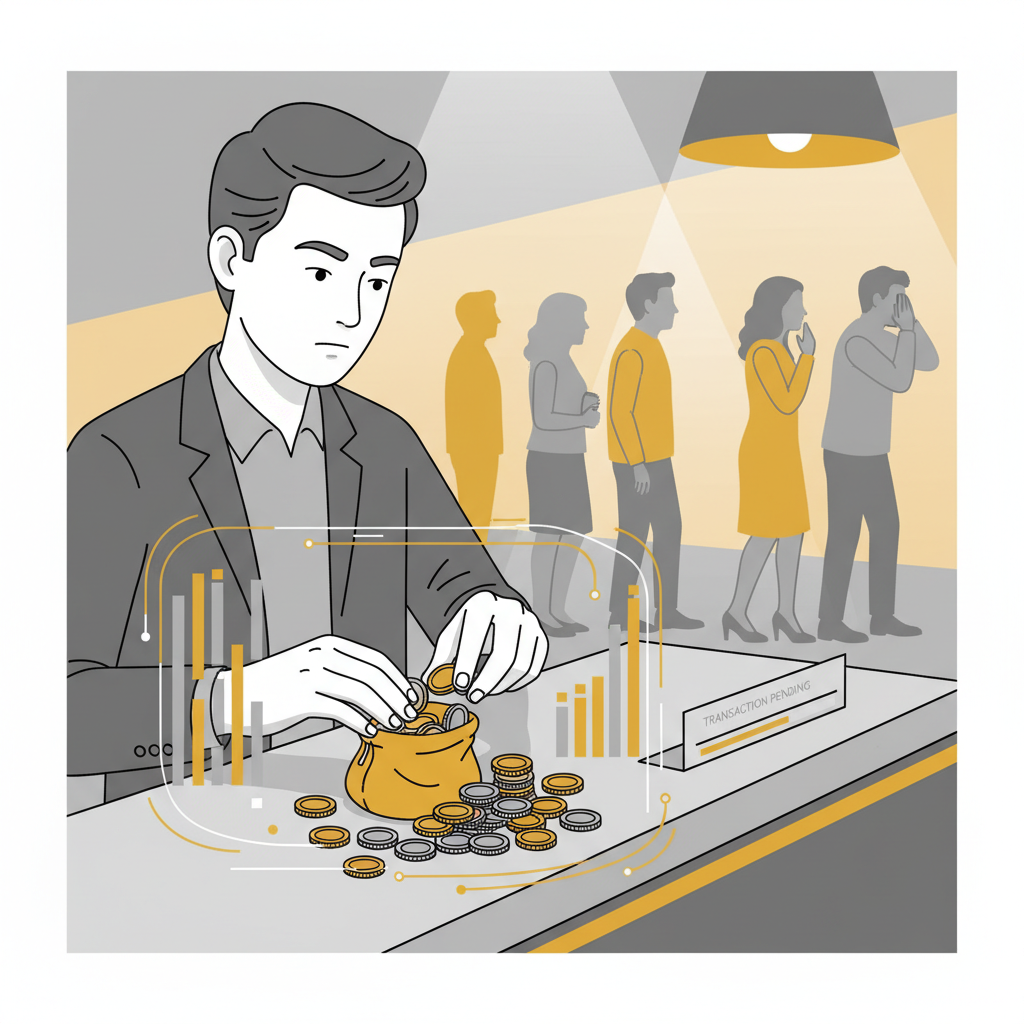The Five Dollar Desperation Play

I watched a man count out change for a McDouble last week. Quarters, dimes, and nickels spread across the counter as the line behind him shifted from foot to foot. The cashier waited, steady as a rock. Twenty years ago, that same guy would have flashed a twenty and told them to keep the rest. Now he's rooting through his jacket pocket for pennies, slow and deliberate, like he's guarding something he almost forgot he had.
There’s a backstory to McDonald’s shiny new value menu that the company won’t broadcast. They’re not winning; they’re bleeding. The five-dollar meal deal feels more like a tourniquet than a cure.

Here's what happened, in plain terms: McDonald's got a bit too confident and raised prices by about 9 percent between 2022 and 2024, because they could. Where else were people supposed to go? Then reality hit hard. Lower-income customers stopped showing up—not gradually, not slowly, but outright. Even the company's own CEO, Chris Kempczinski, acknowledged what he calls a bifurcated consumer base: rich customers still buy Big Macs, while poorer ones don't.
I make my living selling software to restaurant chains. If you want to see real panic, picture a room full of executives realizing their quarterly numbers are about to crater because they priced out half their customers. McDonald's spotted that cliff coming and did what any desperate sales team would do: slash prices and call it strategy.
Those Extra Value Meals they're pushing now come with a fifteen percent discount on regular combos. The $5 meal deal that started as a summer promotion is being extended indefinitely because they can't afford to kill it. They're pumping about $40 million into marketing this problem, basically paying people to remember McDonald's exists.

Here's where it gets interesting. Last week I talked with a Phoenix franchise owner who runs three locations and has spent about fifteen years in the business. He's stuck between corporate pushing for traffic numbers and beef prices that just won't settle down. For every $5 meal deal he sells, his margins keep shrinking. 'Corporate gets their quarterly report,' he told me, 'and I have to figure out how to pay my staff.'
The math is brutal. McDonald's needs bodies through the door to hit their same-store sales targets; they logged 3.2% growth last quarter, barely beating Wall Street's 2.8% forecast. But those numbers come from selling more for less. It's like celebrating because you sold your couch to make rent.
Know who’s really getting squeezed? The morning shift workers who used to grab breakfast on the way to their warehouse jobs. The single moms who treated their kids to Happy Meals on Fridays. They’re not choosing between McDonald’s and Burger King anymore. They’re choosing between fast food and the grocery store. And groceries are winning.
McDonald's has their finger on the pulse. That's why app-only deals are front and center: free fries with a dollar purchase, new-user giveaways, and other welcome perks. Beyond burgers, they're collecting real-time signals about how stretched customers are right now. Every app download gives them a clue about who'll jump through hoops for a discount.

The 'Buy One, Add One for $1' deal lays out the whole game. They know people aren't eating alone anymore; they're pooling money, sharing meals, and stretching one purchase across several people. When your pricing assumes customers are splitting a burger, you've already lost.
What really gets me is this supposed value strategy. It sounds like a stroke of brilliance, but it's really an admission that they pushed too hard and broke something along the way. It's damage control dressed up as consumer care. The same executives who hiked prices when they could are now acting like heroes for bringing them back down to something barely affordable.
After pitching to enough CFOs, I can spot a margin squeeze when I see one. McDonald's is betting volume will save them: get enough people through the door at lower prices and maybe the math will add up. But that isn’t strategy; it’s hope. And hope doesn’t pay quarterly dividends.
The real tell is in what's not being said. There's no aggressive forward guidance. No bold predictions about a market recovery. Just cautious language about ongoing pressure on discretionary spending through early 2025. In other words, corporate speak for we're in a tough spot and we know it.
Want the practical takeaway? Watch what companies do when their core customers can’t afford them anymore. McDonald’s isn’t innovating or pivoting or disrupting. They’re retreating to the last position that actually worked: cheap food for people who are feeling the pinch. The value menu isn’t a strategy; it’s a white flag.

The scariest part is that McDonald's has more resources than almost any restaurant chain on the planet. If they're that spooked about consumer spending, what's happening to everyone else? Your local pizza joint, the Chinese place that's been there twenty years, the family diner; they don't have $40 million to pour into marketing.
Next time you see a McDonald’s value meal ad, remember what you’re really watching: a multi-billion-dollar company admitting that America is too broke for Big Macs at full price. That isn’t a promotion. It’s an economic weather report. And yeah, it’s saying a storm is coming.
The Phoenix franchise owner told me something as we wrapped up. 'Twenty years ago, value meals were for teenagers and college kids. Now they're for everybody.' He paused, then added, 'That's not growth. That's survival.'
He's right. McDonald's isn't bucking the dining downturn; it's a sign that things are worse than anyone wants to admit. When the place that sells happiness in a red box can't make the numbers work with desperation pricing, we're not talking about a rough quarter. We're looking at what happens when the bottom falls out and everyone pretends they don't hear the crash.


Comments ()